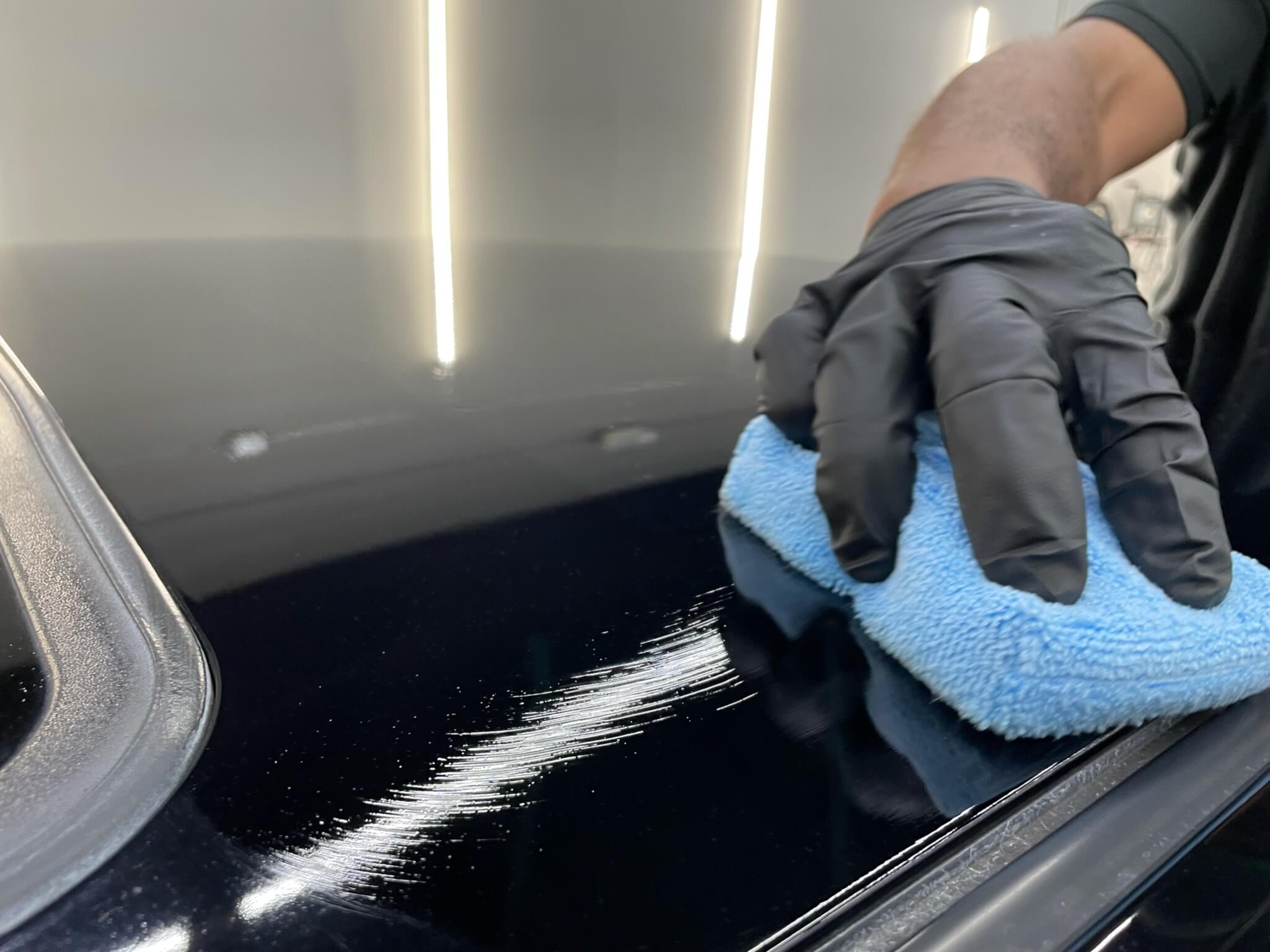Frequently Asked Questions Concerning Ceramic Coating Philadelphia Services Answered
Frequently Asked Questions Concerning Ceramic Coating Philadelphia Services Answered
Blog Article
Why Ceramic Finishing Is the Ultimate Option for a Flawless End Up
Ceramic layer has actually emerged as a leading option for those seeking a remarkable finish for their automobiles, many thanks to its remarkable toughness and safety attributes. What factors really set ceramic layer apart?
What Is Ceramic Coating?

When used correctly, ceramic finishing produces a hydrophobic surface that fends off water and dirt, making it simpler to clean up and preserve. Unlike typical waxes or sealers, which commonly supply brief protection, ceramic finishings can last for several years, depending upon the product quality and application technique. The process of applying ceramic covering requires careful prep work, including extensive cleansing and in some cases paint adjustment, to ensure optimum bonding and effectiveness.
Ceramic layers are not limited to vehicle surface areas; they can likewise be made use of on various materials, including glass, steel, and plastics, supplying a flexible service for improving defense. In general, ceramic finish represents a substantial innovation in surface protection technology, integrating both useful and visual benefits for a large range of applications.
Benefits of Ceramic Finish
While many surface defense choices exist, the benefits of ceramic finishing stick out due to its unique residential properties and resilient performance. One of the main advantages is its outstanding toughness. Ceramic Coating Philadelphia. Unlike typical wax or sealers that call for constant reapplication, ceramic finishes provide a durable layer that can last for several years, substantially reducing upkeep initiatives
Another notable advantage is boosted security versus environmental contaminants. Ceramic coatings develop a hydrophobic surface that drives away water, dust, and different contaminants, making it much easier to clean up. This attribute not only protects the car's appearance but additionally decreases the risk of corrosion and oxidation, particularly in rough weather condition problems.
Furthermore, ceramic finishings offer premium resistance to UV rays, protecting against fading and degradation of paint with time. This UV defense is critical for maintaining the visual worth of surface areas and automobiles revealed to route sunshine.
In addition, the shiny surface accomplished with ceramic finish enhances the overall visual appeal, giving surfaces a showroom-quality luster. On the whole, ceramic finishings stand for a substantial advancement in surface area defense innovation, supplying long-lasting benefits that satisfy both visual and functional needs.
How It Functions
Recognizing the science behind ceramic coatings exposes exactly how they supply such remarkable defense and long life. At its core, a ceramic coating is a liquid polymer that chemically bonds with the lorry's factory paint. This bonding creates a safety layer that is both oleophobic and hydrophobic, repelling water, dust, and oil. The key part of a lot of ceramic finishings is silicon dioxide (SiO2), which is originated from quartz. This compound adds to the layer's hardness and resistance to scrapes, UV rays, and ecological pollutants.
The application procedure entails several steps, including surface area preparation, which is essential to attaining ideal adhesion. When used, the coating undergoes a curing procedure, during which it solidifies and creates a semi-permanent bond with the paint surface. This bond is what identifies ceramic finishes from typical waxes and sealants, giving a longer-lasting safety barrier that can sustain for years.
In addition, the density of the finishing can improve its protective high qualities, ensuring that it can endure severe problems. Inevitably, the scientific research of ceramic layers combines innovative materials with innovative application techniques to provide an unrivaled Get the facts degree of defense and visual improvement for automobiles.
Contrast With Typical Methods
When contrasted to conventional paint defense methods such as sealants and waxes,The benefits of ceramic finishes end up being especially evident. While waxes use a short-lived luster, normally lasting a few weeks to a number of months, ceramic coatings give a resilient safety layer that can sustain for a number of years. This durability dramatically reduces the frequency of reapplication, making ceramic coverings a much more economical remedy gradually.
In addition, traditional techniques typically require extensive prep work and several applications to attain a sufficient level of security. In comparison, ceramic coverings bond at a molecular degree with the car's surface, producing a durable guard against ecological contaminants like UV rays, acid rainfall, and roadway salts. This bond this article boosts the vehicle's resistance to scrapes and swirl marks, which prevail with conventional waxes and sealers.
In addition, the hydrophobic properties of ceramic finishings drive away water and dust, causing much easier cleaning and maintenance. On the other hand, wax and sealant-treated surface areas can attract grime, requiring more regular cleaning - Ceramic Coating Philadelphia. In general, ceramic layers not only supply remarkable security but additionally supply a more long-lasting and aesthetically enticing surface, establishing them as the favored option for discerning car owners
Application and Upkeep Tips

Making use of a foam applicator, apply the finish in little sections, complying with the supplier's guidelines relating to density and overlap. Allow enough treating time in between coats, normally 24-hour, to make certain appropriate bonding. After application, it is important to prevent exposure to water or rough components for at the very least a week to permit the layer to totally heal.
In addition, making use of a ceramic maintenance spray can enhance the coating's hydrophobic homes and longevity. Normal evaluations for any kind of indications of wear will certainly aid preserve the finish's integrity and protect that beautiful coating.
Final Thought
Finally, ceramic finish becomes an exceptional option for attaining a flawless automotive coating. Its remarkable longevity, protective qualities, and hydrophobic homes dramatically enhance the car's look while streamlining upkeep efforts. By developing a robust bond with manufacturing facility paint, ceramic layer efficiently blog guards versus scratches, UV rays, and environmental contaminants. With a life expectancy expanding numerous years, this sophisticated option not only preserves but additionally boosts the total aesthetic charm of cars, making it a cost-effective investment for cars and truck lovers.

Report this page